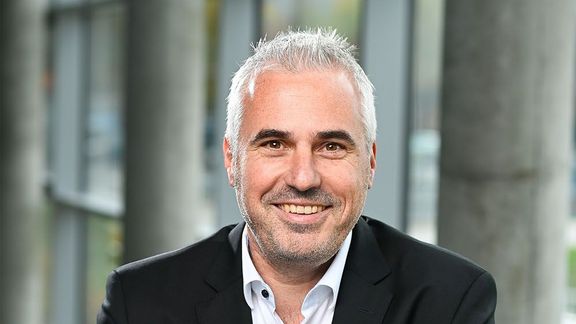As part of the collaboration between Carinthia University of Applied Sciences (CUAS) and the Medical University of Vienna, seven PhD positions will be established to develop new methods in the field of ultra-high-field magnetic resonance imaging, histology and artificial intelligence. The research aims to make progress in the treatment of brain tumours and demyelinating diseases such as multiple sclerosis.
New research platform pools scientific know-how
In order to pool scientific findings, an innovative research platform is being set up on the part of CUAS under the responsibility of Günther Grabner, Head of the Master’s degree programme Medical Engineering and Analytics. It will combine scientific expertise and equipment at the cutting edge of technology from three departments of the Medical University of Vienna – the University Hospitals for Radiology and Nuclear Medicine, for Neurology as well as for Neurosurgery – and CUAS in the study area Engineering & IT, Medical Engineering and Analytics.
“We are very excited about the collaboration with the Medical University of Vienna and the opportunity to build this research platform,” says Günther Grabner. “Seven doctoral students will work on the development of new methods in the field of clinical imaging, image processing and visualisation,” says the head of the master’s programme in Medical Engineering and Analytics at CUAS.
“The project focuses on the development of advanced MR neuro imaging methods, identification of clinical biomarkers for neurological diseases and establishment of new computer-aided analysis and visualisation methods,” clarifies Michaela Fritz, Vice-Rector for Research and Innovation at the Medical University of Vienna.
FWF President Christof Gattringer: “Training young scientists is a particularly important task for Austria as a research location – be it a university or a university of applied sciences. With the doc.funds.connect programme, the FWF specifically supports cooperative doctoral studies between universities and universities of applied sciences in order to increase further synergies. The field of brain research still harbours many questions that need to be answered. I wish the doctoral programme every success and am pleased to see further expansion of research capabilities here.”
Artificial intelligence supports computer-aided analysis and visualisation methods
The goal of this cooperative PhD programme includes the establishment of new clinically relevant biomarkers in neurological diseases by developing innovative MR imaging techniques. In the future, these technologies will be used as analysis and visualisation tools with a high clinical impact. The collaboration between Carinthia University of Applied Sciences and the Medical University of Vienna should also lead to the education of the next generation of scientists, developers and physicians who can share use of these technologies in clinical routine. An example of this would be optimising neurosurgical planning to better determine the type of tumour and its environment and simulating the procedure using virtual reality.
In order to meet the highest international standards, as well as to increase the attractiveness for applicants, the doctoral programme includes at least one stay abroad with international research partners per doctoral student. Seven internationally renowned cooperation partners from academia (e.g. Harvard and MIT) and industry (e.g. ICOMETRIX) have agreed to host our candidates.
In addition to the positive effects for all those involved in this project, this interdisciplinary and cooperative doctoral programme will also significantly increase the extent of medical research in Carinthia, as the latest findings of the largest medical research institution in Austria will be incorporated into the education.
Contact:
Carinthia University of Applied Sciences
FH-Prof. PD. Dr. Günther Grabner
Head of the Degree Programme “Medical Engineering and Analytics”
+43 5 90500 3582
g.grabner[at]fh-kaernten[dot]at
www.fh-kaernten.at
---
Medical University of Vienna
Mag. Johannes Angerer
Head of Corporate Communications and Public Relations
01 40 160-11501
pr[at]meduniwien.ac[dot]at
www.meduniwien.ac.at/pr
Medical University of Vienna – Short profile
The Medical University of Vienna (in short: MedUni Vienna) is one of the most traditional medical education and research institutions in Europe. With around 8,000 students, it is now the largest medical training institution in the German-speaking world. With more than 6,000 employees, 30 university hospitals and two clinical institutes, 13 medical theoretical centres and numerous highly specialised laboratories, it is one of Europe’s most important top-level research institutions in the biomedical field. MedUni Vienna also has a medical history museum, the Josephinum.


